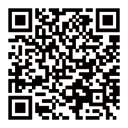

 |
|
 |
|
 |
||||||||||
|
Ease difficult taskAll fulcrum type shearing tools use a shearing action that starts near the fulcrum and progresses toward the tips as the handles are squeezed. This action creates a force which often pushes harder and thicker materials toward the tips, requiring a sizable opposite force to accomplish cutting. Some have serrations on the outside of the edges to reduces to reduce slipping , which only works with softer material. The most important factor is that blade edges are held in close contact through their entire length of cut or else tearing may occur or thin material may slip between them rather than being cut.Since most are basically levers with the fulcrum in the middle, the ratio of the relative distances of the squeezing point and the cutting point from the fulcrum determines both the force and movement ratio. When the squeezing point is at a greater distance from the fulcrum than the cutting point, the cutting force is greater and the movement is less than that applied to the handles. This has two effects in selection. Relatively long handles provide greater control through less cutting movement and greater cutting force. The latter is often referred to as the mechanical advantage. As the cutting point moves toward the tip, the movement increases and the force decreases. Due to leverage ratio changes, the squeezing force required increases as cutting point approaches tips. As mentioned above, there is a force that pushes the work piece toward the tips, which is generated by the angle of attack at the cutting point. Close to the fulcrum the force is greater due to the wide angle. As the point moves toward the tips, both the angle and the force decrease. Scissors may have very thin or thick blades with sharp pointed or blunt tips in any combination. Although most are designed for specific uses, preferences are determined by the end user.The only general guide lines are that thinner and narrower blades are less rigid than thicker and wider, plus they must fit between two or three dimensional obstacles without obscuring sight of cut. Excess length may limit maneuverability. Short length may produce jagged lines in long cuts, due to repositioning between each cut segment. Cutting to the tips will only aggravate the situation. Cutting out intricate decals requires fine, short blades with clear vision of cutting point.ln most cases, it is better to roughly cut pieces apart and trim them after. But this is limited by the minimum size that can be held. Dull scissors tear rather than cut.Spring opening can be good or bad dependent on situation and preference. Variation in style and characteristics are common. |
|||||||||
| Copyright © 2014 Scissorslinsfactory All Right Reseved | ||||||||||